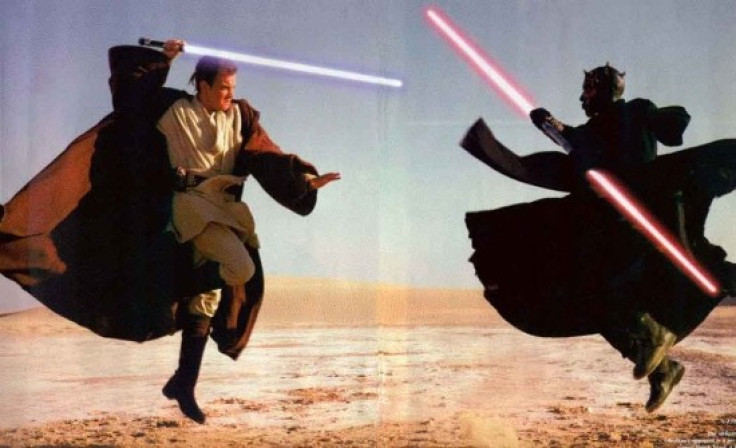Real-Life Star Wars Lightsabers Created by Harvard and MIT Scientists
Star Wars fans could soon have their very-own, real-life lightsabers following research published by scientists from Harvard and MIT.

The report published by Nature magazine details how scientist has discovered a new way of binding photons together in order to form a new molecule which replicates almost exactly the nature of the iconic weapons favoured by both Jedi Knights and Sith Lords
"Most of the properties of light we know about originate from the fact that photons are massless and do not interact," said Harvard physics professor Mikhail Lukin. "What we have done is create a special type of medium in which photons interact with each other so strongly that they act as though they have mass, and bind together to form molecules."
While this may not sound much like George Lucas' vision of a galaxy far, far away, Lukin himself makes a Star Wars analogy:
"It's not an in-apt analogy to compare this to lightsabers. When these photons interact with each other, they're pushing against and deflect each other. The physics of what's happening in these molecules is similar to what we see in the movies."
Rubidium
The new molecules were formed when a number of photons were blasted through a cloud of rubidium atoms. When more than one photon was sent through at the same time, Lukin and his colleagues noticed they began to cling to each other and interact in a similar manner to the famous lightsaber blade.
But for those of you getting your hopes up that you might find a real-life lightsaber under your Christmas tree this year, you may have to think again. Professor Lukin says the experiment was done to develop photons for use in building a quantum supercomputer.
"We do this for fun and because we're pushing the frontiers of science. But it feeds into the bigger picture of what we're doing because photons remain the best possible means to carry quantum information. The handicap, though, has been that photons don't interact with each other."
A new Star Wars trilogy is in the works after Disney bought the rights to the franchise through its acquisition of LucasFilm last October in a deal worth $4bn. And while Disney would no doubt love to be able to sell real-life lightsabers alongside lunchboxes and plastic toys, they could be some way off yet.
© Copyright IBTimes 2024. All rights reserved.






